Wharfedale Diamond 12.2 Review: Shine on you crazy…
The latest member of the long-running series makes some significant revisions over its predecessor. Ed Selley adds polish. Read our Wharfedale Diamond 12.2 Review.
For any product line to have survived a dozen model revisions is notable in itself. The Diamond series, Wharfedale’s premier range of affordable speakers, has managed this feat while competing in one of the most keenly contested product categories going, making the achievement more impressive still. The twelfth generation comprises three standmounts, two floorstanders and one centre. The 12.2 here is the largest of the standmounts.
The biggest difference between the latest Diamonds and their predecessors is the mid/bass drivers. The previous three generations used a woven Kevlar cone for this, but the 12.2 features a 150mm unit made from a material called Klarity. This is a combination of polypropylene and mica – used in small but unspecified amounts to increase the stiffness of the mid/bass driver. Then, to augment this process even further, it has 15 ribs added in a spoke patten arranged in three groups of five.
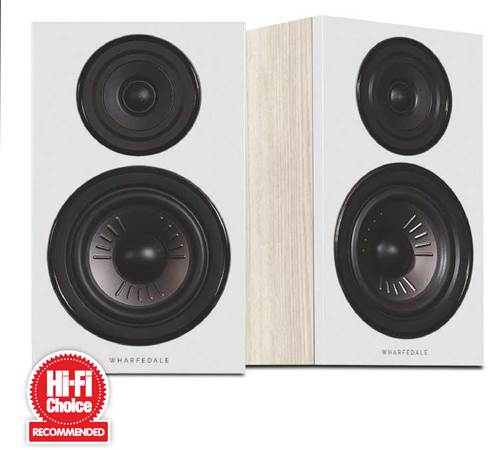
DETAILS
| PRODUCT | Wharfedale Diamond 12.2 |
| ORIGIN | UK/China |
| TYPE | 2-way standmount loudspeaker |
| WEIGHT | 4.1kg |
| DIMENSIONS (WxHxD) | 200 x 335 x 285mm |
| FEATURES | • 25mm soft dome tweeter • 150mm ‘Klarity’ mid/bass driver • Quoted sensitivity: 88dB/1W/1m (8ohm) |
| DISTRIBUTOR | IAG |
| WEBSITE | wharfedale.co.uk |
This interest in driver stiffness is partly down to the surround. Wharfedale has worked with leading designer Karl-Heinz Fink and he’s been keen to avoid the slightly ‘overdamped’ sound that results from polypropylene drivers. By increasing the stiffness, it’s possible to reduce the damping effect of the surround. Another technically interesting feature of the driver is the bobbin that the voice coil is wound on is epoxy rather than aluminium, which is unusual at the price.
The tweeter has more in common with the preceding Diamond 11 range. It’s a 25mm soft-dome design and unlike many rivals, the dome is not mounted in a significant waveguide and there’s no form of rolled outer surround to help dispersion and low-frequency roll-off. The crossover is 2kHz; largely in keeping with rivals.
The crossover has some other nods to Fink’s preferred design theories. It has a 24dB slope and uses air-core inductors. These are another unusual fitment at the price and have been selected because their noise and distortion levels are extremely low – particularly when the drivers have been designed with their use in mind, as is the case here. Fairly unusually at the price, the Diamond 12.2 can be bi-wired.
The most immediate impression of the Diamond 12.2 is one of propulsive energy
Although the staggered V profile of the terminal panel looks interesting, it is harder to connect cables to than a more conventional arrangement.
The cabinet that houses all this is extensively braced using a computer modelled ‘spot brace’ technique that applies specific bracing to the points measured to require it rather than simply applying larger braces in a more routine fashion. One interesting change from older models is the reversion to a more conventional cylindrical port over the slot used in the past. Wharfedale says this improves the relationship between port and drivers, although it is possible that more care will need to be taken when placing the 12.2 than might have been the case before.
In the time they’ve been around, Diamond speakers have managed to be among the very best and worst-looking cabinets at the price. This latest generation finds itself towards the upper end of the looks table. The use of a gloss front panel is a nice touch and leaves the 12.2 looking smarter than many similarly priced rivals. Quite how smart will depend slightly on the finish you choose. The review samples come in the white/light oak, which looks a little incongruous with the black drivers and the supplied black grille. The darker finishes are better, but there’s no questioning the way in which the Diamond 12.2 is bolted together. It has become something of a cliche to say it, but there really aren’t many companies
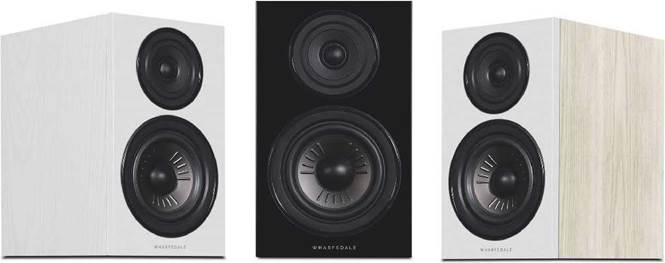
that touch IAG when it comes to the level of fit and finish it can achieve at affordable price points – and this is another fine example of that.
Sound quality
Connecting the Diamond 12.2 to a Rega io (HFC 464) and the recently updated iFi Zen DAC, the most immediate impression is one of propulsive energy. The 12.2 gets stuck into the gloriously nostalgic stadium rock of Mammoth WVH with enormous enthusiasm. The Wharfedale combines two different attributes to fine effect to do this. The first is that the bass extension is excellent. The quoted frequency response of 50Hz to 20kHz at +/- 3dB is bettered in this room and the 12.2 feels weighty and hard-hitting as a result, with the low end something you can feel as well as hear. This is combined with a turn of speed that ensures that the thunderous opener Mr. Ed is a head nodding joy. Whatever efforts have been taken to ensure that the Wharfedale doesn’t feel overdamped have not been bought at the expense of control.

The upper registers are very nearly as accomplished. There is a perception when listening to the 12.2 with something really gloriously recorded like Sarah Jarosz’s Blue Heron Sessions that this standmount has been designed to flatter poorer, more aggressive- sounding material. This can leave something superb like this sounding fractionally lacking in sparkle, but this is as much the result of the partnering
Fairly unusually at this price point, the Diamond 12.2 can be bi-wired
electronics also avoiding unwanted brightness. With a rather hotter recording like Dreams Come True by Brandon Flowers, the Wharfedale stays civilised until you really push it, by which point your listening levels will be firmly antisocial anyway.
The combination of these attributes and the commendable tonality that the 12.2 demonstrates is that – while it’s not absolutely transparent – it’s easier to discern where the cabinets are placed than with arch rival Q Acoustics 3030i (HFC 472). But the Wharfedale still does a fine job of creating a believable soundstage. The effortless modern jazz of Burn Out by The Cinematic Orchestra is reproduced in a way that creates a believable dynamic between the performers and ensures that they’re easy to follow as individuals and intelligible as a group. Little details like the vibrating fretboard from the plucked strings are worked effortlessly into the performance and the result is consistently good enough to ensure the suspension of disbelief.
Something else I find interesting is that this relatively affordable speaker is capable of reflecting changes further up the audio chain better than you might expect. Substituting the pricecomparative Rega and iFi with the rather pricier Naim Supernait 3 (HFC 456) and Chord Hugo2/2Go (HFC 465) combination sees the 12.2 make small but noticeable gains in bass extension and demonstrate a greater three dimensionality at the top end. I’m not suggesting that this is a natural partner for several thousand pounds of equipment, but it does have more stretch in it than you might reasonably expect a speaker of this price to possess, which means it’ll likely hold its own as you upgrade your equipment.
Conclusion
What this all adds up to is a speaker with undoubted star quality. The Diamond range has always been about demonstrating ‘hi-fi ability’ at a sensible price without losing the ability to work happily with less than pristine material. This latest version meets that brief with aplomb; putting in a performance with commendable realism, space and detail without losing the fun factor. When you consider the superb build quality, reasonable good looks and competitive price point, the result is a very fine speaker indeed. The Diamond Series might be 12 generations in, but it still has plenty more to give
HOW IT COMPARES
The Diamond 12.2 and Q Acoustics 3030i both have areas of strength. The Wharfedale is more propulsive and engaging with higher tempo material. It feels better damped and controlled and is also fractionally easier to drive. The Q Acoustics has a startling ability to disappear into the soundstage it creates. Both designs have admirably little colouration, but the 3030i really is a class apart in this regard. It also manages to be nearly as forgiving as the Wharfedale, but feels fractionally more energetic at the top end as well.
When you purchase through links on our site, I may earn an affiliate commission. Here’s how it works.


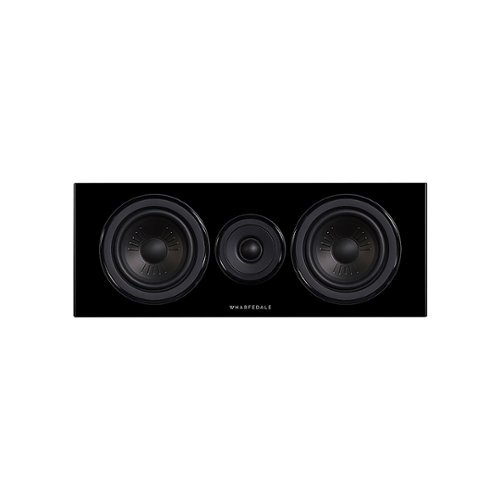

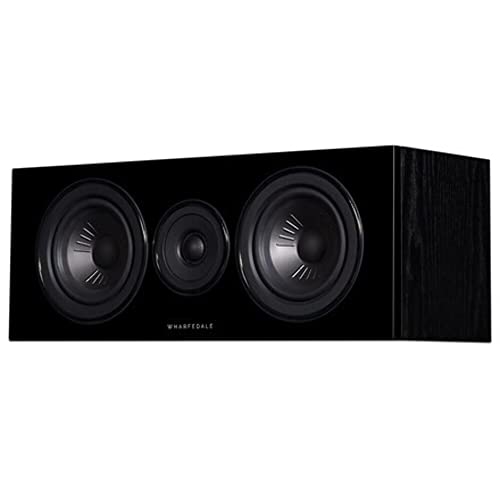



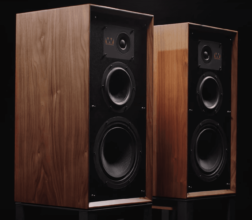
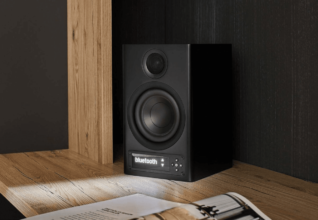


Some more comparison between 12.2 and 3030i would be helpful. Especially on classical music, colours of instruments, timbre, vocals, strings ( a difficult achievement for any speaker I find ) and of course which one is less fatiguing in the long run..
Thanks for the review , a pleasure for us to read